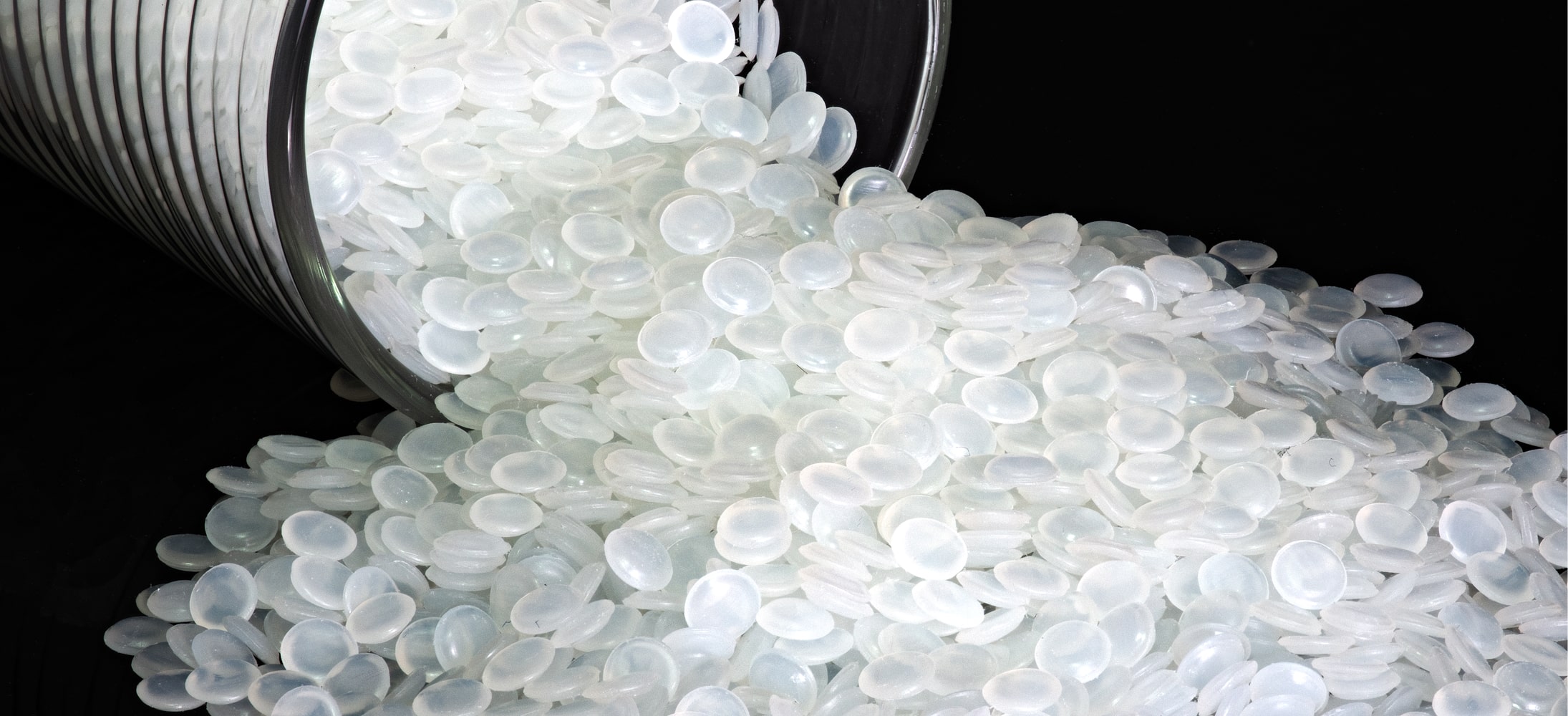Russian PET industry gets less dependent on imports due to gradual growth of domestic capacities. At the same time there are signs of shortage in raw materials base for production of PET which opens up new investment opportunities for Russian major oil companies.
On February 20, the Ninth International «PET 2013» Conference was held by Inventra company, part of Creon Group. Etana Clean Polymers Factory was the Gold Sponsor of the Conference, and Buhler was the Partner of the event. The Conference was supported by Retal and PETplanet.
In his welcome address, Sandjar Turgunov, General Director of Creon Energy, suggested that the key players of the market share their forecasts on market development and reveal their plans on diversification of production under the consideration of a possible ban on PET for packaging of alcoholic beverages.
David Swift, Managing Director of PCI PET Packaging and a traditional participant of the Conference, spoke about the influence of the global oversupply crisis on PET business in Europe and presented data on the world PET market. In 2012, high cost of PET raw materials, especially, paraxylene, resulted in slowdown in the countries with developed economy, which fostered growth of local producers in emerging markets. Thus, some regional markets tend to become self-sufficient in raw materials. Asia-Pacific countries were the growth leaders. Their share in total volume of world production capacities reached 54.7%. Leading positions are occupied by China: it accounts for 18% of the world demand in 2012.
In his presentation the speaker also presented data on the dynamics of price spreads on PET and the main components. In particular, he noted that in November 2012 the margin of PET manufacturers in Asia and elsewhere was typically below full cash cost. To date, the situation returned to normal, but remains fragile.
These facts were confirmed by the next speaker – Joy Mukherjee, Head of Polymeric Business at Amgulf Polymers & Chemicals, who added that PET price remained low because of market saturation, that is why the producers’ margins have been reducing. But producers in the Middle East countries have gained predominant position because of prime low cost positioning and in-house raw materials availability, especially of MEG. Besides, their favorable geographical location allows to cut down logistics costs. Joy Mukherjee spoke about Middle East production capacities, and also marked the desire of Gulf producers to become leaders in export. In 2013 the total production in the Gulf will reach 1985 thousand tons. However, due to the limited size of the local market, the Middle East producers are depending on the volume of exports. Taking into account the situation in the European countries, exporters are considering new markets.
PET recycling issues were also raised at the Conference. David Swift noted that collection rate for recycling in China is estimated at 85%, in Japan it is about 50% (8.1 million tons). Almost 22% of the volume collected is lost during the processing. In contrast, Konstantin Rzaev, Member of the Board of Directors of Ekotekhnologiya Plant, spoke about recycling industry in Russia where the average selection of useful fractions from the total amount of solid municipal waste makes 5-15%. In Russia there are about 900 official disposal sites and less than 40 waste switching stations, therefore the price for recycled plastics is higher than in the majority of other countries. In 2012 Russian consumption of recycled PET made about 94 thousand tons, production was at about 80 thousand tons.
Alexander Shkurin, Senior Analyst of Kortes Research and Information Center, continued the overview of the Russian market. In 2012 PET production volume made 452.6 thousand tons, consumption was at 566.1 thousand tons. He underlined the shortage of feedstock. Future of the new announced projects (total capacities may exceed 1.5 million tons per year by 2015) is unclear due to unsolved problem of component supplies: there is a shortage of both terephthalic acid, and MEG.
Russian import made 184 thousand tons. PET perform production accounted for 91.8% of the total volume, while the share of grades for polymer fibers was 8.2% only. Main suppliers are China (41%) and South Korea (32%). The export volume was 70.5 thousand tons.
Statistics demonstrates that the saturation point in PET-preform market is approaching, however producers unanimously say that the Russian market is growing. Alexander Igoshin, Marketing Specialist of Europlast Holding considers that the growth in Moscow and Saint-Petersburg is about 4-5%, while it is impossible to monitor market figures in the regions for a number of reasons. Vera Zaryanova, Marketing Director of Retal Company, in contrast, sees growth in the regions for several years now. In 2012 Retal noted growth in milk and mineral drinking water consumption. The share of beer segment was 25-30%, so the inconsistent ban on PET-packing in this sector would lead to a strong oversupply which the PET-market will have to overcome in about 10 years, taken the average annual growth rate estimated by Retal at 3-4%. According to Olga Rykova, Commercial Director of Alpla Company, the two largest suppliers in the PET-preform market – Retal and Europlast – have a market share of about 50%. Alpla supplies relatively small volumes of PET-preforms, and expects some growth in 2013.
Andrey Erin, Corporate Affairs Director at SUN InBev commented on the situation concerning possible ban on PET packaging for alcoholic beverages. The share of PET packaging that is consumed at breweries is about 30% of all PET packaging market. In Russia 50% of beer goes to PET bottles, in Belarus – about 80%. In Kazakhstan, where plastics packaging for alcohol beverages is already banned, an original solution has been found. Beer and bottles are sold in different corners of the shop. Thus, in Kazakhstan the share of beer in PET packaging is no less than 25%. Interests of glass and metal bottle and can producers, as well as vodka producers are possibly behind the regular attacks on PET packaging. Reports of alleged dibutyl phthalate content in PET-packed beer are in contradiction with scientific data. Besides, Andrey Erin considers that results of laboratory tests were obtained with violation of regulations for PET-packaging use. And even in this case, the concentration of dibutyl phthalate was 10 times lower than the rate allowed by Rospotrebnadzor (the federal consumer right protection body in Russia). In return, Khalidya Khamidulina, the Expert of Rospotrebnadzor, who had been appointed to respond to this appeal, spoke in details about the dangers of dibutyl phthalate and promised to follow up to the situation in details under the consideration of the data received at the Conference.
Danil Polyakov, Head of Sales in Russia & CIS at Buhler AG, spoke about the strategy of PET producers and development of technologies in Russia and the CIS. In the course of equipment production, the following factors are considered: minimization of raw materials consumption, reduction of capital expenditure and operating costs. SSP technology which provides for high quality of the product and minimizes energy consumption of the whole PET manufacture complex (CP+SSP), meets these requirements in full. Detailed features of this technology were presented in the speaker’s presentation.
Many experts at the conference noted a lapsided development of PET industry in Russia and called for diversification. Emil Aizenstein, Head of Polymer and Textile Department at Koltech International, underlined that 70% of PET globally is processed into fiber and yarns. In 2011 the world market of textile fibers of all types increased by 6% and reached 84.2 million tons where the share of polyester was 38.7 million tons. Leading positions are kept by China (68%) and India (8%). In 2011 the volume of Russian polyester fibers market grew by 18.4% and made 211.4 thousand tons; of which artifical wool made 167.5 thousand tons, technical yarns was 12.3 thousand tons, textile yarns was 31.6 thousand tons. The launch of new production capacities in Russia is expected not earlier than in 2016.
Following up, Sergey Nikolaev, Deputy General Director and Project Manager of Ivregionsintez Cluster Textile Corporation, said that the Federal Program for Industrial Development and Raising Competiveness was complemented by a draft Project of PET-fiber production plant in Ivanovo Region in December 2012. The project implementation is expected to be financed by private investors (20%) and Vnesheconombank (80%). Contract negotiations with engineering companies for providing basic and project documentation are on the way. On the basis of engineering documentation, the investment declaration will be presented to Vnesheconombank (duration guideline: autumn 2013). Start of production is planned for 2016. Raw materials sources are: MEG from Nizhnekamskneftekhim (produced at new capacities to be launched in 2016), while terephthalic acid to be imported.
Another large-scale project is the launch of the Special Economic Zone «Agroindustrial Park PLANA». According to Sergey Ashinov, General Director of Etana Clean Polymers Factory, the goal of establishing the agroindustrial park is development of agriculture and creation of own raw materials base and textile industry production in Kabardino-Balkar Republic with a capacity estimated at 580 thousand tons. The structure of the Special Economic Zone will include a textile cluster, clusters of plastic packing (including recycling), food processing, power generation, and also objects of infrastructure. Textile cluster is oriented at industrial production, including new generation chemical fibers produced with application of nanotechnologies, finished textile and clothes.
In particular, the technologies of producing regenerated polyester fibers from recycled PET raw material will be implemented within PLANA project. All interested manufacturers of packaging and agricultural production are welcome to the new industrial park. PET plant is already under construction, where Renaissance Heavy Industries is the contractor. Production capacity of the enterprise will make 486 thousand tons of PET per year; 30% of production will be fiber grades. Uhde Inventa-Fischer AG company is the General EPC contractor of plant construction and the supplier of «liquid» phase of technological process, while Buhler company is the supplier of the «solid» phase.
The main idea of ChemTerra industrial park, also under construction in the Republic of Bashkortostan, is in creation of new segments of PET application. The Development Corporation of the Republic of Bashkortostan is engaged in organization and management of this industrial park. The park is planned to be launched by the end of 2013. Svetlana Kochkayeva, Deputy General Director for Development and Administrative Support to Business at Sibur-PET, spoke about residents and infrastructure in details.
Fares Kilzie, Head of CREON Group considers that slow action of major Russian oil companies in taking investment decisions on PET opens up a fair niche for independent players, who can act as accelerators. «This is a complicated task, but it paves the way for creating workplaces in those regions where they are sharply needed. Etana is one of such projects», – summarized Mr. Kilzie.




